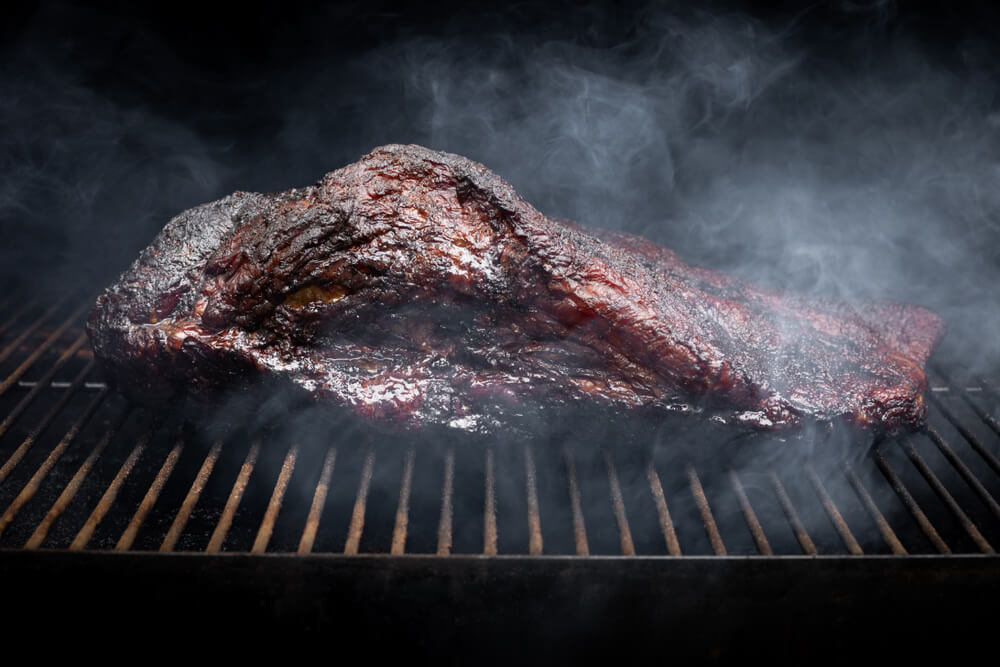What Is Brisket? A Guide to Cuts, Cooking, and Flavor

Brisket is a term that often surfaces in discussions about barbecue and slow-cooked meats, but what exactly is brisket? In the simplest terms, brisket refers to a specific cut of meat from the lower chest or breast of beef cattle. This particular area, located beneath the first five ribs and behind the foreshank, is known for its rich flavor and tender texture when cooked properly.
The beef brisket cut is comprised of two main parts: the flat and the point. The flat cut tends to be leaner with a consistent thickness, making it ideal for slicing. Meanwhile, the point cut has more marbling and fat content, which contributes to its juiciness and robust taste. Understanding these distinctions can help you choose the right type of brisket for your culinary needs.
Brisket meat has become a staple in various cuisines around the world due to its versatility. From traditional Jewish pot roasts to Texas-style smoked barbecue, this cut offers endless possibilities for delicious meals. The key to unlocking its full potential lies in slow cooking methods that allow connective tissues to break down over time, resulting in tender and flavorful dishes.
Knowing where brisket comes from on the cow and how it’s defined can enhance your appreciation of this beloved meat. Understanding these basics will set you on the path to mastering one of barbecue’s most prized cuts.
Types of Brisket and Their Unique Characteristics
The brisket is divided into two main sections: the flat cut, also known as the “first cut” or “leaner cut,” and the point cut, often referred to as the “second cut” or “deckle.” The flat cut is more popular due to its uniform shape, which makes it ideal for slicing. It has a consistent fat layer that keeps it moist during cooking, making it a favorite for dishes like corned beef or pastrami.
On the other hand, the point cut is known for its higher fat content and marbling. This gives it a richer flavor profile and makes it particularly suitable for slow-cooking methods like smoking or braising. The extra fat renders down during cooking, resulting in an incredibly juicy and succulent dish.
In addition to these traditional cuts, there are regional variations that bring their own flair to brisket preparation. For instance, Texas-style brisket focuses on simple seasoning with salt and pepper before being smoked low and slow over wood chips to achieve a deep smoky flavor. Meanwhile, Jewish-style brisket often incorporates sweet elements like honey or brown sugar in its braising liquid.
Each type of brisket offers something unique to explore in terms of taste and texture. Whether you prefer a leaner slice from the flat cut or indulge in the rich decadence of a point cut roast, understanding these differences allows you to make informed choices that will elevate your culinary creations.
The Art of Cooking Brisket
Cooking brisket is an art that combines patience, technique, and a touch of creativity. Whether you’re a seasoned pitmaster or a home cook looking to impress, understanding the different methods for preparing brisket can elevate your culinary skills. Here’s a list of popular techniques to consider:
- Smoked Brisket Recipe: Smoking brisket is perhaps the most revered method among barbecue enthusiasts. This technique involves cooking the meat low and slow over indirect heat with wood smoke infusing its flavor. The key is maintaining a consistent temperature and allowing plenty of time for the smoke to work its magic.
- Slow-Cooked Brisket: For those who prefer convenience without sacrificing taste, slow-cooking brisket in a crockpot or slow cooker offers tender results with minimal effort. This method allows you to set it and forget it, as the meat cooks gently over several hours in its own juices or with added broth for extra flavor.
- Barbecued Brisket Techniques: Barbecuing brisket often involves both smoking and direct grilling methods to achieve that coveted crusty exterior known as “bark.” Mastering this technique requires balancing time on the smoker with finishing touches on the grill for an authentic barbecue experience.
- Braised Beef Brisket: Braising involves cooking brisket slowly in liquid at low temperatures, resulting in incredibly tender meat that falls apart effortlessly. This method is ideal for creating rich flavors by using wine, broth, or tomato-based sauces as part of your braising liquid.
Each of these methods brings out unique flavors and textures in beef brisket, offering something special depending on your taste preferences and available equipment. Experimenting with these techniques can help you find your perfect approach to this beloved cut of meat.
Tips for Selecting and Preparing the Perfect Brisket at Home
When it comes to preparing the perfect brisket at home, selecting the right cut of meat and knowing how to prepare and season it are crucial steps. Here are some essential tips to guide you through this process:
- Choosing the Best Cut of Meat: Start by selecting a high-quality brisket from your local butcher or grocery store. Look for a cut with good marbling, as this will ensure tenderness and flavor. The flat cut is leaner, while the point cut is fatter and is juicier choose based on your preference.
- Preparing and Seasoning: Once you have your brisket, it’s time to prepare it for cooking. Trim excess fat but leave a thin layer for moisture retention during cooking. Season generously with salt, pepper, garlic powder, and any other spices you prefer; a simple rub can enhance the meat’s natural flavors without overpowering them.
- Cooking Techniques: Low and slow is the mantra when it comes to brisket. Whether you’re using an oven or smoker, maintaining a consistent low temperature will break down connective tissues over time, resulting in tender meat.
- Slice Like a Pro: After cooking your brisket to perfection, let it rest before slicing. This allows juices to redistribute throughout the meat. Use a sharp knife to slice against the grain for maximum tenderness.
- Serving Suggestions: Brisket is versatile and can be served in various ways, from classic barbecue plates with sides like coleslaw and baked beans to sandwiches or tacos with fresh toppings like pickles or onions.
By following these tips on choosing, preparing, seasoning, slicing, and serving your homemade brisket dishes can turn out deliciously every time!
Embrace the Rich Flavor and Versatility of Briskets in Your Kitchen Today!
In conclusion, briskets offer a rich flavor and versatility that can transform your culinary experiences. Whether you’re a seasoned chef or an enthusiastic home cook, incorporating brisket into your repertoire can open up a world of delicious possibilities. From traditional slow-cooked methods that bring out the deep, savory notes to innovative recipes that infuse new flavors, briskets are adaptable to various cooking styles and preferences.
Their unique texture and taste make them ideal for everything from hearty stews to mouthwatering sandwiches. Moreover, with the right preparation techniques, even novice cooks can achieve tender and flavorful results. Embracing brisket in your kitchen not only expands your culinary skills but also allows you to explore diverse dishes that are sure to impress family and friends alike.
So why wait? Dive into the world of brisket cooking today and discover how this remarkable cut of meat can elevate your meals with its robust taste and incredible versatility.

